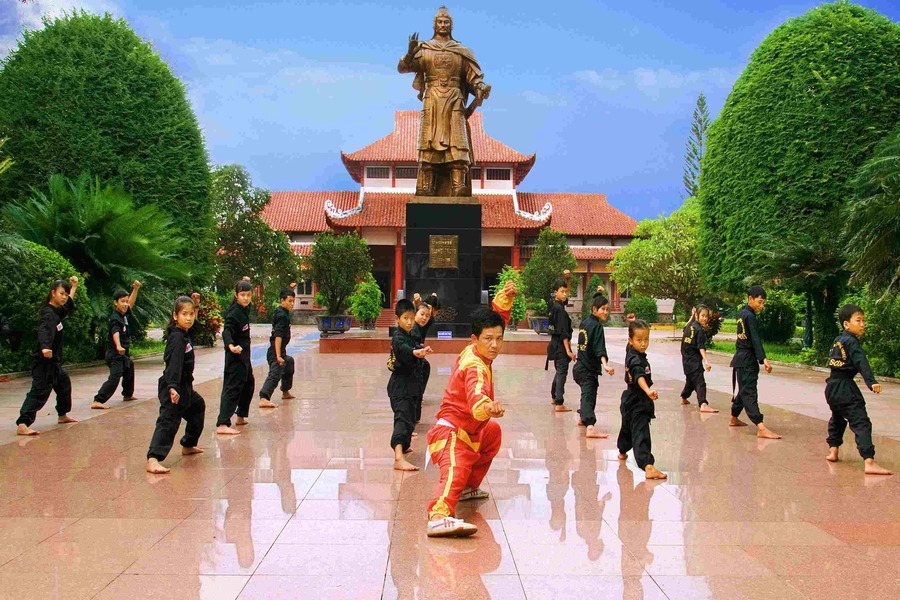The Quang Trung Museum in Quy Nhon is a cultural institution dedicated to preserving and commemorating the life, achievements, and legacy of Emperor Quang Trung (Nguyễn Huệ). Located in the heart of Quy Nhon City, Binh Dinh Province, Vietnam, the museum offers visitors a comprehensive journey through the history of Emperor Quang Trung’s reign and his pivotal role in Vietnamese history.
The museum’s architecture itself reflects traditional Vietnamese design elements, offering a cultural immersion that enhances the visitor’s experience. Through its exhibits and educational programs, the Quang Trung Museum serves as a beacon of national pride and historical education, ensuring that Emperor Quang Trung’s legacy continues to inspire and educate future generations about Vietnam’s rich cultural heritage and struggle for independence.
About Quang Trung – Nguyen Hue
Early Life and Rise to Power
Nguyễn Huệ was born in 1753 in Phú Xuân (modern-day Huế), then part of the Nguyễn lords’ domain in southern Vietnam. His father, Nguyễn Phúc Luân, was a nobleman of the Nguyễn family. During this period, Vietnam was divided between the Nguyễn lords in the south and the Trịnh lords in the north, with both factions vying for control over the country.
Nguyễn Huệ’s rise to power began during a period of political instability and peasant uprisings known as the Tây Sơn rebellion. Led by three brothers from the Tây Sơn region (Nguyễn Nhạc, Nguyễn Lữ, and Nguyễn Huệ), the rebellion gained momentum as they rallied local support against the oppressive rule of the Nguyễn lords.
Military Campaigns and Victories
Nguyen Hue’s military campaigns are the cornerstone of his legacy. After the deaths of his brothers, he assumed leadership of the Tây Sơn rebellion and launched a series of bold military campaigns to unify Vietnam and expel foreign invaders.
- Battle of Rach Gam-Xoai Mut (1785): Nguyen Hue defeated a joint Siam and Nguyen lord army, establishing his authority over southern Vietnam.
- Battle of Ngoc Hoi-Đong Đa (1789): This decisive battle against the Qing Dynasty’s forces is Nguyen Hue’s most celebrated victory. The Qing had invaded northern Vietnam and installed the Le dynasty as puppet rulers under the Trinh lords. Nguyen Hue’s victory at Đong Đa marked a significant turning point in Vietnamese history, symbolizing the expulsion of foreign invaders and the restoration of Vietnamese independence.
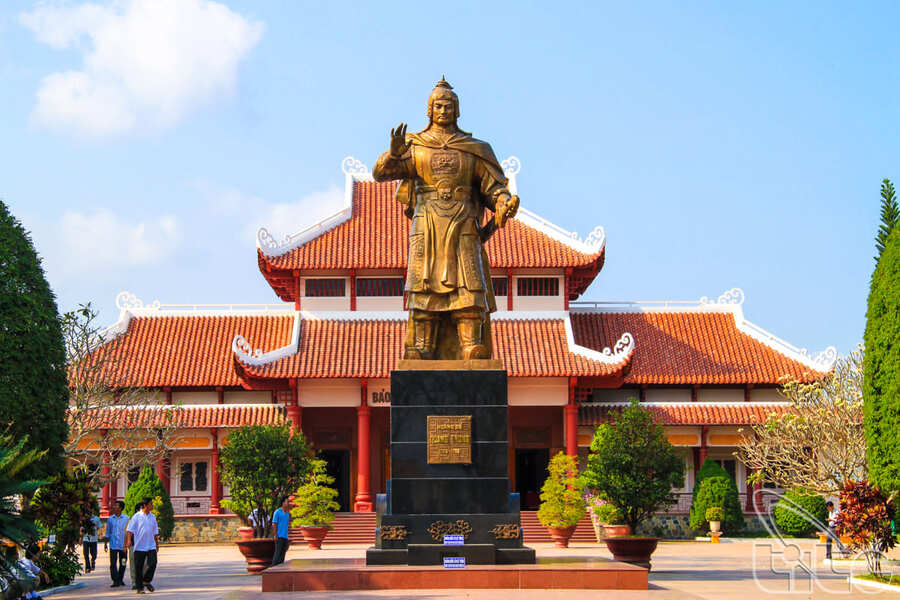
Reforms and Administration
Following his military victories, Nguyễn Huệ proclaimed himself Emperor Quang Trung and established the Tây Sơn dynasty. His reign was characterized by efforts to consolidate power and implement reforms aimed at improving governance and social equality.
- Land Reforms: Quang Trung redistributed land to peasants, reducing the influence of the feudal system and promoting agricultural productivity.
- Centralized Governance: He centralized administration to strengthen the authority of the Tây Sơn dynasty and improve governance across Vietnam.
- Military Reforms: Quang Trung implemented military reforms to modernize the army and maintain national defense against potential threats.
Legacy and Impact
Quang Trung’s legacy is enduring and multifaceted, leaving a profound impact on Vietnamese history and culture:
- National Hero: He is revered as a national hero for his role in defending Vietnamese sovereignty and uniting the country against foreign aggression.
- Cultural Symbol: Quang Trung’s leadership embodies resilience, bravery, and national unity, resonating deeply in Vietnamese cultural identity.
- Inspiration: His legacy inspired later nationalist movements and leaders who sought to uphold Vietnamese independence and sovereignty.
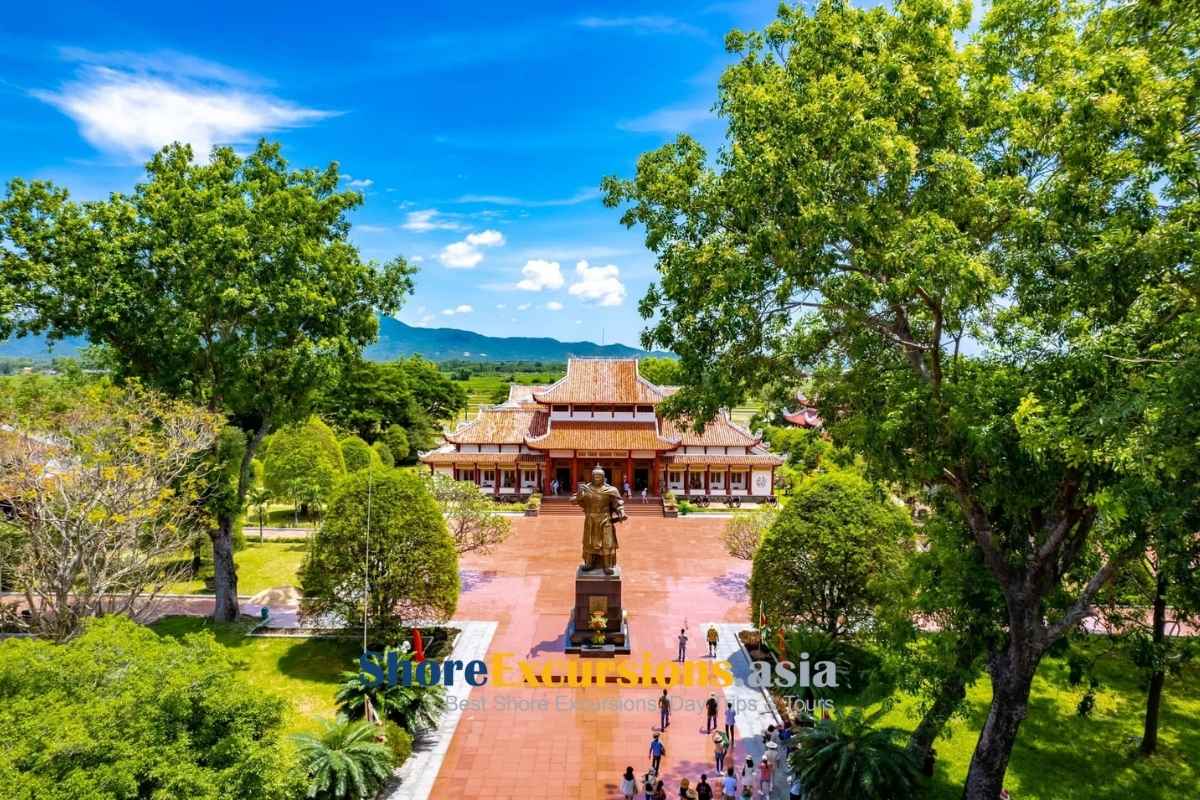
Death and Succession
Quang Trung’s reign came to an abrupt end with his untimely death in 1792, likely due to illness. His death precipitated internal power struggles within the Tay Son dynasty, leading to its eventual decline and the resurgence of the Nguyen lords.
Nguyen Dynasty: Following Quang Trung’s death, the Nguyen lords reasserted control and established the Nguyen dynasty in 1802, marking the beginning of a new era in Vietnamese history.
Overall, Quang Trung – Nguyen Hue’s legacy as Emperor Quang Trung endures as a testament to his leadership, military prowess, and dedication to Vietnamese independence during a tumultuous period in the country’s history. His contributions continue to be celebrated through various commemorations and historical narratives in Vietnam.
What’s Displayed in Quang Trung – Nguyen Hue Museum
Artifacts and Weapons
The Quang Trung – Nguyen Hue Museum in Quy Nhon, Vietnam, offers a captivating glimpse into the military history and legacy of Emperor Quang Trung (Nguyen Hue) and the Tay Son Dynasty. Among its notable exhibits are a diverse array of artifacts and weapons that highlight the strategic prowess and technological advancements of the Tay Son military. Visitors can marvel at an impressive collection of swords, spears, and polearms, each reflecting the craftsmanship and combat effectiveness crucial to Tay Son warfare.
Bows and arrows, emblematic of Vietnamese archery skills, stand alongside firearms that underscored the era’s evolving battlefield tactics. The museum also features various types of armor and helmets worn by Tay Son soldiers, providing insight into their defensive strategies. Larger displays may include models of artillery and siege weapons, illustrating the dynasty’s capability in both offensive and defensive warfare. Together, these artifacts paint a vivid picture of Emperor Quang Trung’s campaigns and the Tay Son’s enduring impact on Vietnamese history, showcasing their determination for independence and national unity.
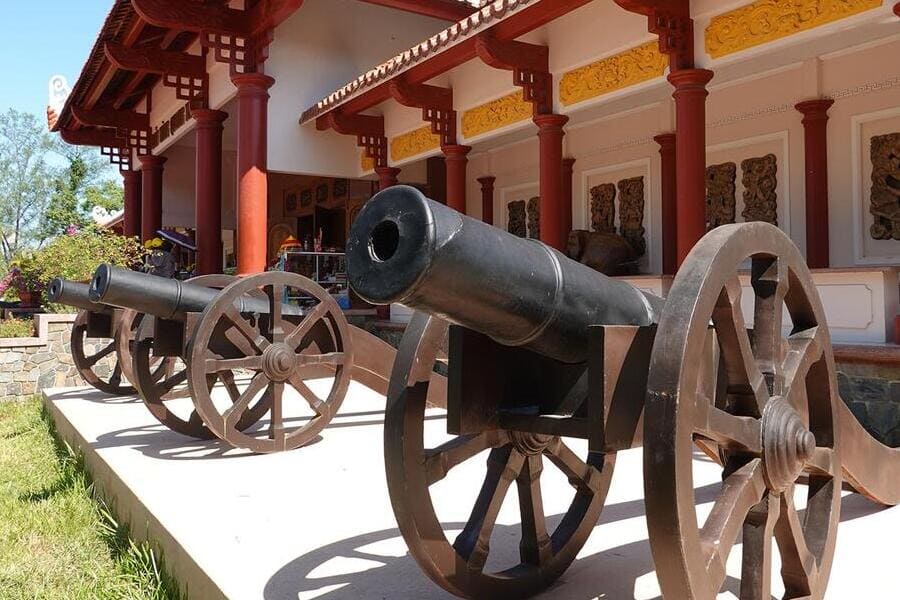
Military Uniforms and Armor
The Quang Trung – Nguyen Hue Museum in Quy Nhon, Vietnam, houses an impressive collection of military uniforms and armor that provide a tangible connection to the Tay Son Dynasty’s military prowess. Visitors to the museum can explore various types of uniforms worn by Tay Son soldiers, ranging from ceremonial attire to battle-ready garments. These uniforms reflect the strategic and tactical considerations of the era, designed to provide both protection and mobility on the battlefield.
Among the exhibits are intricately crafted suits of armor made from materials such as metal, leather, and chainmail, showcasing the defensive technologies of the time. The armor pieces vary in style and design, tailored to different ranks and roles within the Tay Son military hierarchy. Helmets, shields, and body armor further demonstrate the evolution of defensive equipment during the period.
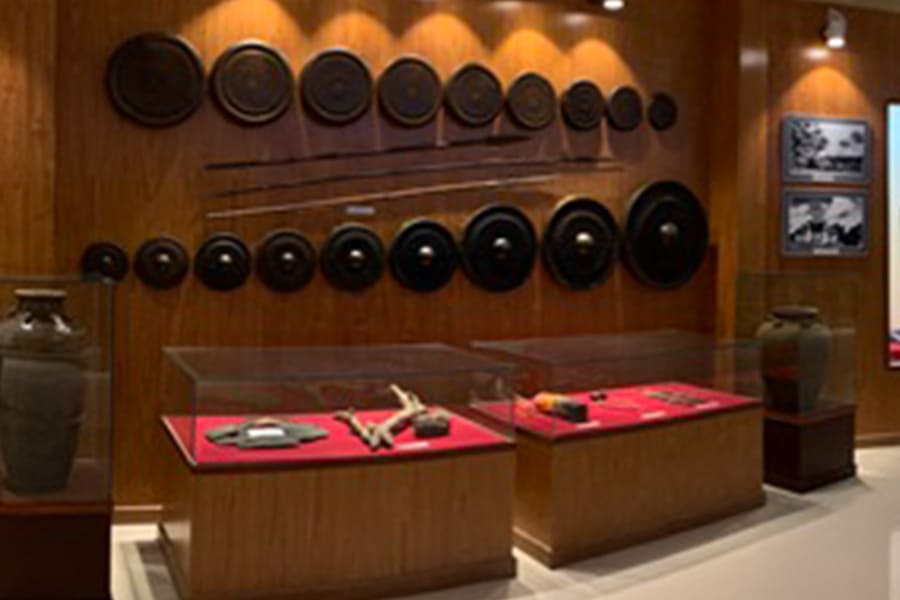
The museum’s displays also highlight the craftsmanship involved in producing these military uniforms and armor, often adorned with intricate designs and symbols representing the Tay Son’s cultural identity and military ethos. These artifacts not only serve as historical relics but also offer insights into the martial traditions and strategic thinking that shaped the Tay Son Dynasty’s military campaigns under Emperor Quang Trung.
Battlefield Maps and Dioramas
The Quang Trung – Nguyen Hue Museum in Quy Nhon enriches its exhibits with detailed battlefield maps and dioramas that vividly depict pivotal moments in Tay Son Dynasty military history. These artifacts provide visitors with a visual narrative of the strategic maneuvers and battles led by Emperor Quang Trung and his forces during their campaigns against the Nguyen Lords and the Qing invaders. The battlefield maps meticulously illustrate the geographical landscapes where key engagements took place, from the decisive victories to the strategic retreats. They offer insights into the tactical considerations and terrain challenges faced by the Tay Son military, underscoring their adaptive strategies and leadership under Emperor Quang Trung.
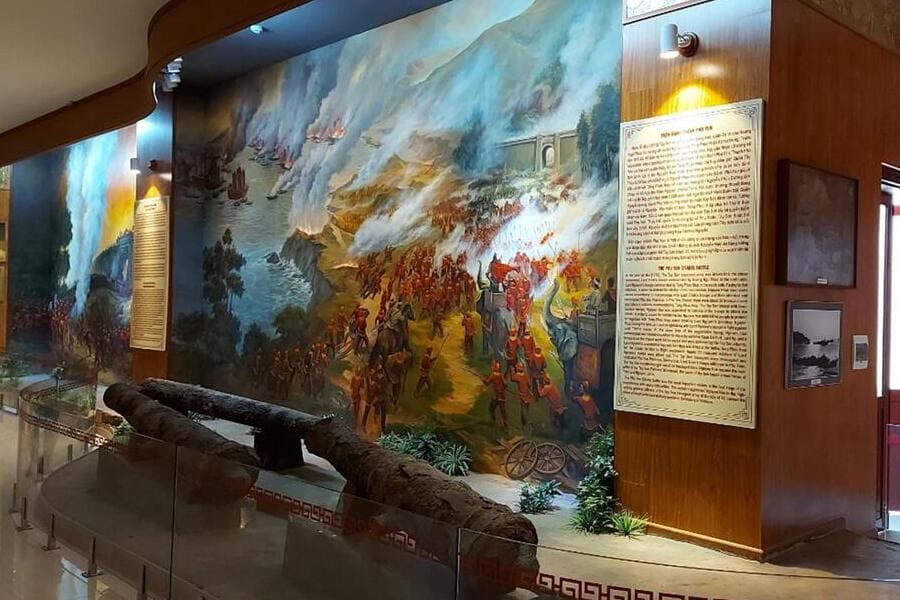
Complementing the maps are meticulously crafted dioramas, which bring to life scenes from significant battles such as the battles of Dong Da and Ngoc Hoi-Dong Da. These dioramas are meticulously detailed, showcasing miniature soldiers, weaponry, and battlefield scenarios, capturing the intensity and scale of historical conflicts. Together, these artifacts provide a comprehensive understanding of the military campaigns and the significant victories that defined the Tay Son Dynasty’s rise to power under Emperor Quang Trung. They offer visitors a compelling visual journey through history, highlighting the strategic brilliance and resilience of the Tay Son forces in defending Vietnam’s sovereignty during a critical period of its history.
Historical Documents and Artwork
The Quang Trung – Nguyen Hue Museum in Quy Nhon houses a rich collection of historical documents and artwork that offer profound insights into the Tay Son Dynasty and its pivotal figure, Emperor Quang Trung. These artifacts include rare manuscripts, decrees, and diplomatic correspondences that illuminate the political and administrative governance of the Tay Son regime. Among the highlights are original documents signed by Emperor Quang Trung himself, detailing military strategies, administrative reforms, and diplomatic engagements during his reign. These documents provide a firsthand glimpse into the emperor’s vision and leadership style, shedding light on his efforts to unify Vietnam and defend it against foreign invasions.
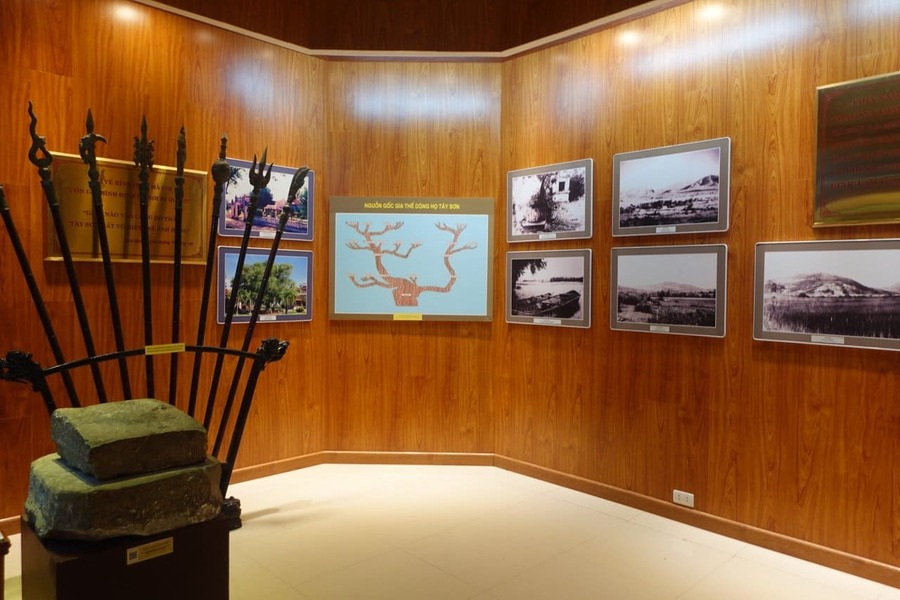
Additionally, the museum displays a range of artwork from the Tay Son period, including paintings, sculptures, and decorative arts. These artworks depict scenes from Quang Trung’s life, military campaigns, and cultural practices of the era. They serve not only as aesthetic representations but also as historical records of the cultural and artistic achievements under the Tay Son Dynasty. The collection of historical documents and artwork at the Quang Trung – Nguyen Hue Museum offers visitors a unique opportunity to delve into the complexities of Tay Son history and Emperor Quang Trung’s legacy. They provide a nuanced understanding of Vietnam’s historical development during the late 18th century, highlighting the dynasty’s efforts in reforming governance, promoting cultural identity, and defending the nation’s sovereignty.
Cultural and Social Life Exhibits
The Quang Trung – Nguyen Hue Museum in Quy Nhon features a diverse array of exhibits that showcase the cultural and social life during the Tay Son Dynasty. These exhibits offer a captivating glimpse into the daily life, customs, traditions, and societal structures prevalent in Vietnam during Emperor Quang Trung’s reign. Visitors to the museum can explore artifacts and displays illustrating various aspects of cultural life, including traditional costumes worn by different social classes, ceremonial objects used in religious practices and rituals, and household items reflecting daily routines of the time. These artifacts provide insights into the material culture of the Tay Son period and highlight the artistic craftsmanship of the era.
Moreover, the museum houses exhibits that depict social structures and hierarchies, showcasing how society was organized under the Tay Son Dynasty. Visitors can learn about governance systems, legal codes, and educational practices that shaped social order and influenced daily life. Artifacts such as official seals, administrative documents, and educational tools offer a deeper understanding of the governance and intellectual pursuits during that period.
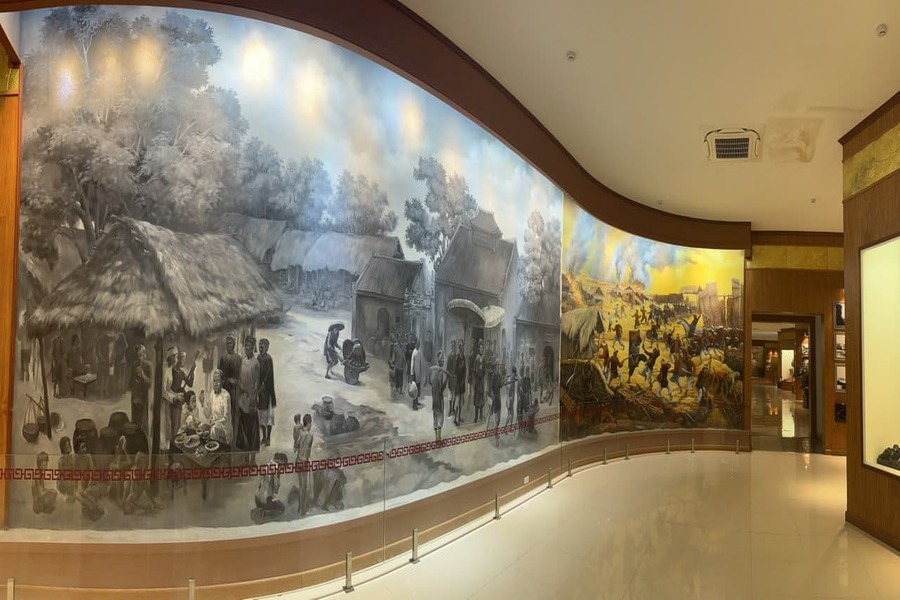
Additionally, cultural exhibits at the museum feature musical instruments, theatrical props, and artworks that highlight the vibrant arts scene of the Tay Son era. Displays of traditional performing arts, literature, and folk beliefs provide insights into the cultural expressions and spiritual life of the Vietnamese people during Quang Trung’s reign. Overall, the cultural and social life exhibits at the Quang Trung – Nguyen Hue Museum enrich visitors’ understanding of the Tay Son Dynasty’s cultural heritage and its impact on Vietnamese society. They offer a comprehensive exploration of the era’s customs, values, and artistic achievements, fostering appreciation for the rich cultural tapestry of Vietnam’s history.
Emperor Quang Trung’s Legacy
Emperor Quang Trung, also known as Nguyen Hue, left a lasting legacy that continues to resonate in Vietnamese history and culture. Born in 1753 in Phu Xuan (present-day Hue), Nguyen Hue rose to prominence during a tumultuous period marked by the decline of the Le Dynasty and external threats from the Qing Dynasty in China. One of Quang Trung’s most significant achievements was his leadership during the Tay Son Rebellion, a popular uprising against the corrupt Trinh lords in the north and the Nguyen lords in the south. With his military prowess and strategic acumen, Quang Trung united disparate factions and rallied the people to overthrow the oppressive feudal rulers. In 1789, he decisively defeated the Qing army in the Battle of Dong Da, liberating Thang Long (Hanoi) from Chinese occupation and establishing himself as a national hero. Quang Trung’s reign as emperor of the Tay Son Dynasty was brief but transformative. He implemented social reforms to alleviate the plight of the peasantry, promoted meritocracy in governance, and sought to restore order and prosperity to a war-torn land. His policies aimed to foster unity among the Vietnamese people and strengthen national identity against foreign interference.
Beyond his military and political achievements, Quang Trung is revered for his embodiment of Vietnamese resilience, patriotism, and commitment to justice. His legacy endures in folklore, literature, and popular culture, where he is celebrated as a symbol of Vietnamese independence and the fight against foreign domination. Today, monuments, museums, and annual commemorations honor Emperor Quang Trung across Vietnam, preserving his legacy as a courageous leader who defended the nation’s sovereignty and inspired generations with his vision of a united and prosperous Vietnam.
Overall, the Quang Trung – Nguyen Hue Museum offers a comprehensive journey through the life and times of Emperor Quang Trung, providing valuable insights into Vietnam’s history, culture, and struggle for sovereignty during the late 18th century.
The significance of Quang Trung – Nguyen Hue Museum
The Quang Trung – Nguyen Hue Museum holds profound significance as a cultural institution dedicated to preserving and commemorating the legacy of Emperor Quang Trung, also known as Nguyen Hue. Located in Quy Nhon, Binh Dinh province, Vietnam, the museum serves as a repository of historical artifacts, documents, and exhibits that illuminate the life, achievements, and impact of Emperor Quang Trung.
The museum plays a crucial role in educating visitors about Emperor Quang Trung’s pivotal role in Vietnamese history, particularly during the Tay Son Rebellion in the late 18th century. Through its exhibitions, the museum chronicles Quang Trung’s rise to power, his military campaigns against both domestic feudal lords and foreign invaders, and his efforts to unite and liberate the Vietnamese people from oppression.
Furthermore, the museum showcases a diverse array of artifacts related to Emperor Quang Trung’s era, including military uniforms, weapons, battlefield maps, dioramas depicting key battles, and cultural artifacts reflecting the social life of the time. These exhibits offer visitors a comprehensive understanding of the socio-political landscape during Quang Trung’s reign and highlight his enduring impact on Vietnamese society.
Beyond its educational role, the Quang Trung – Nguyen Hue Museum serves as a site of cultural pride and national remembrance. It fosters a sense of patriotism and reverence for Emperor Quang Trung among Vietnamese citizens, emphasizing his contributions to the defense of national sovereignty and the promotion of social justice. The museum’s existence underscores the importance of preserving and promoting Vietnam’s rich historical heritage for future generations.
In essence, the Quang Trung – Nguyen Hue Museum stands as a testament to the bravery, leadership, and enduring legacy of Emperor Quang Trung, ensuring that his remarkable achievements and contributions to Vietnamese history are remembered and celebrated. For those on Vietnam shore excursions, this museum offers a profound glimpse into the nation’s past and the indomitable spirit of one of its greatest leaders.

